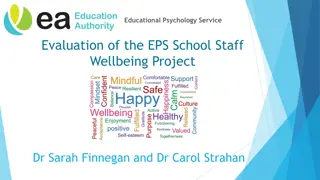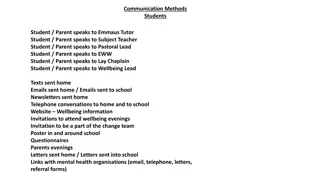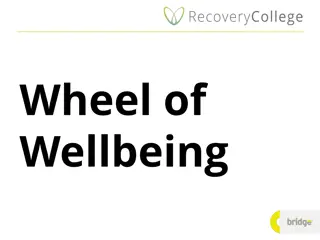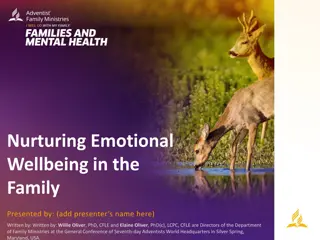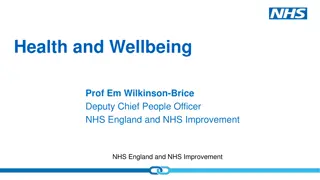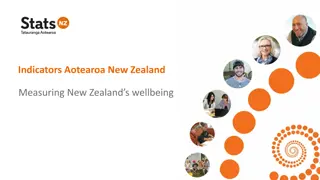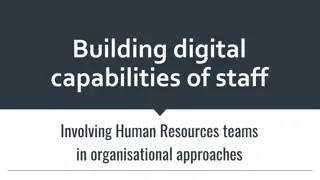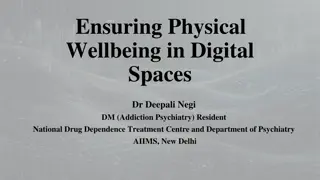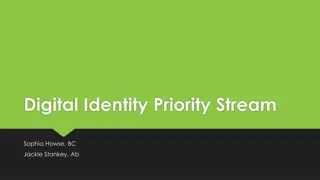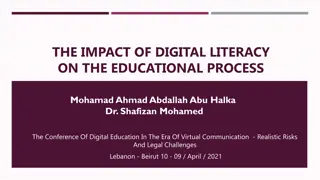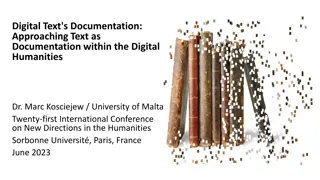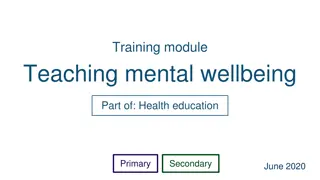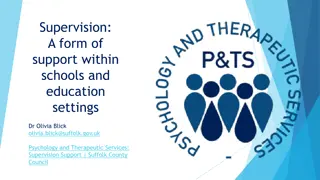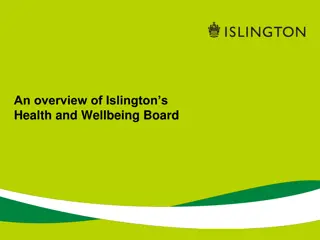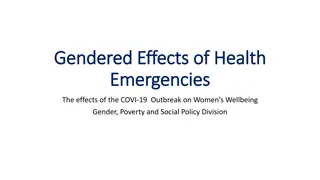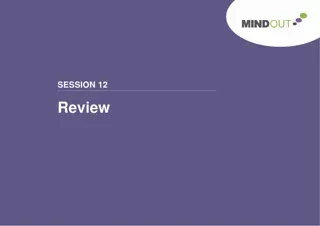Understanding Digital Wellbeing in the Modern Age
Digital wellbeing encompasses the capacity to maintain personal health, safety, relationships, and work-life balance in digital environments. It involves using digital tools responsibly, managing stress, and balancing online interactions with real-world experiences. Concerns about digital wellbeing arise from the blurring of boundaries between work, leisure, and learning, contributing to a 24/7 online lifestyle and potential health impacts. Various issues such as eye strain, mental health disorders, and reduced physical activity highlight the importance of addressing digital wellbeing in today's tech-driven world.
Download Presentation

Please find below an Image/Link to download the presentation.
The content on the website is provided AS IS for your information and personal use only. It may not be sold, licensed, or shared on other websites without obtaining consent from the author. Download presentation by click this link. If you encounter any issues during the download, it is possible that the publisher has removed the file from their server.
E N D
Presentation Transcript
Digital wellbeing: an open discussion on some of the issues associated with digital technologies Abigail Ball Technology Enhanced learning Advisor
JISC Digital capabilities: the six elements Developing/achieving fluency and capability with digital technologies Managing information and data; making meaning from/with digital media Generating original ideas online Developing and managing your online identity ICT proficiency Studying and learning effectively online; engaging in personal and professional development online Developing, contributing and expressing personal views and values online
What is digital wellbeing? The capacity to look after personal health, safety, relationships and work-life balance in digital settings. Using personal digital data for positive wellbeing benefits Using digital media to foster community actions and wellbeing Acting safely and responsibly in digital environments Managing digital stress, workload and distraction Acting with concern for the human and natural environment when using digital tools Balancing digital with real-world interactions appropriately (JISC, 2015)
Why should we be concerned about digital wellbeing? Digital technologies are: eroding the boundaries between work, leisure and learning home, school and workplace (LLiDA project) contributing to our 24/7 online lifestyle source of stress and concern for many people lack of attention to human and environmental health not considering whether digital practices are fully inclusive and equitable (Nominet Trust)
What are your concerns about digital wellbeing? Mentimeter Go to www.govote.at and use the code 66 78 89 Go to www.govote.at and use the code 69 34 27 Linoit Wordle
Health Sight eye strain, dry eyes Neck strain RSI Hearing Sitting too much (redirection of physical exercise to online activities) Weight gain Lack of mobility Upset circadian rhythms (blue light) Late night use of digital technologies reduces amount of sleep and quality of sleep Depression Mood disorders Increased risk of cancer (mobile phones)
Communication Beneficial for supporting existing friendships Can stimulate social connectedness and wellbeing due to possibility of wider networks Positive impact on sense of identity Positive responses to profiles lead to increase in self esteem Improved sense of mastery over technology
Communication Can inhibit the creation of new friendships Instant gratification (engage brain s reward system) Narcissism Grandiose exhibitionism and entitlement/exploitativeness Poor choices and frustration Deficit in social skills Sense of isolation Cyberbullying
Learning/work Multitasking or changing tasks regularly Internet is a valuable learning resource Can improve working memory and slow cognitive decline Some types of gaming can improve visual processing and motor response skills Enhanced brain plasticity Multi-modality enhances how we learn (audio, video, textual)
Learning/work Distraction Multitasking or changing tasks regularly Cognitive losses due to internet addictive disorder Affective response (e.g. violence after playing violent games)
Current identified concerns (JISC) From staff Workload Culture of constant availability Lack of time to explore and understand digital approaches Stress and information overload The changed quality of relationships Work-life balance The responsibility staff take for the wellbeing of others (especially students) in digital settings Promoting respectful behaviour online Promoting and ensuring equality and inclusiveness Checking the impact of digital technologies on human and natural environments
Current identified concerns (JISC) From students Exposure and cyberbullying Fear of losing face to face contact time Managing time/attention in digital spaces
Example digital profile Work in pairs Green = researcher; red = student; blue = teacher Organise the statements into a digital profile that matches your roles Add any extras that you think are missing Remove any that you think are superfluous Plenary
Resources https://www.jisc.ac.uk/rd/projects/building- digital-capability http://www.webarchive.org.uk/wayback/archi ve/20140614200958/http://www.jisc.ac.uk/p ublications/briefingpapers/2009/learninglitera ciesbp.aspx http://www.nominettrust.org.uk/knowledge- centre/articles/impact-digital-technologies- human-wellbeing



